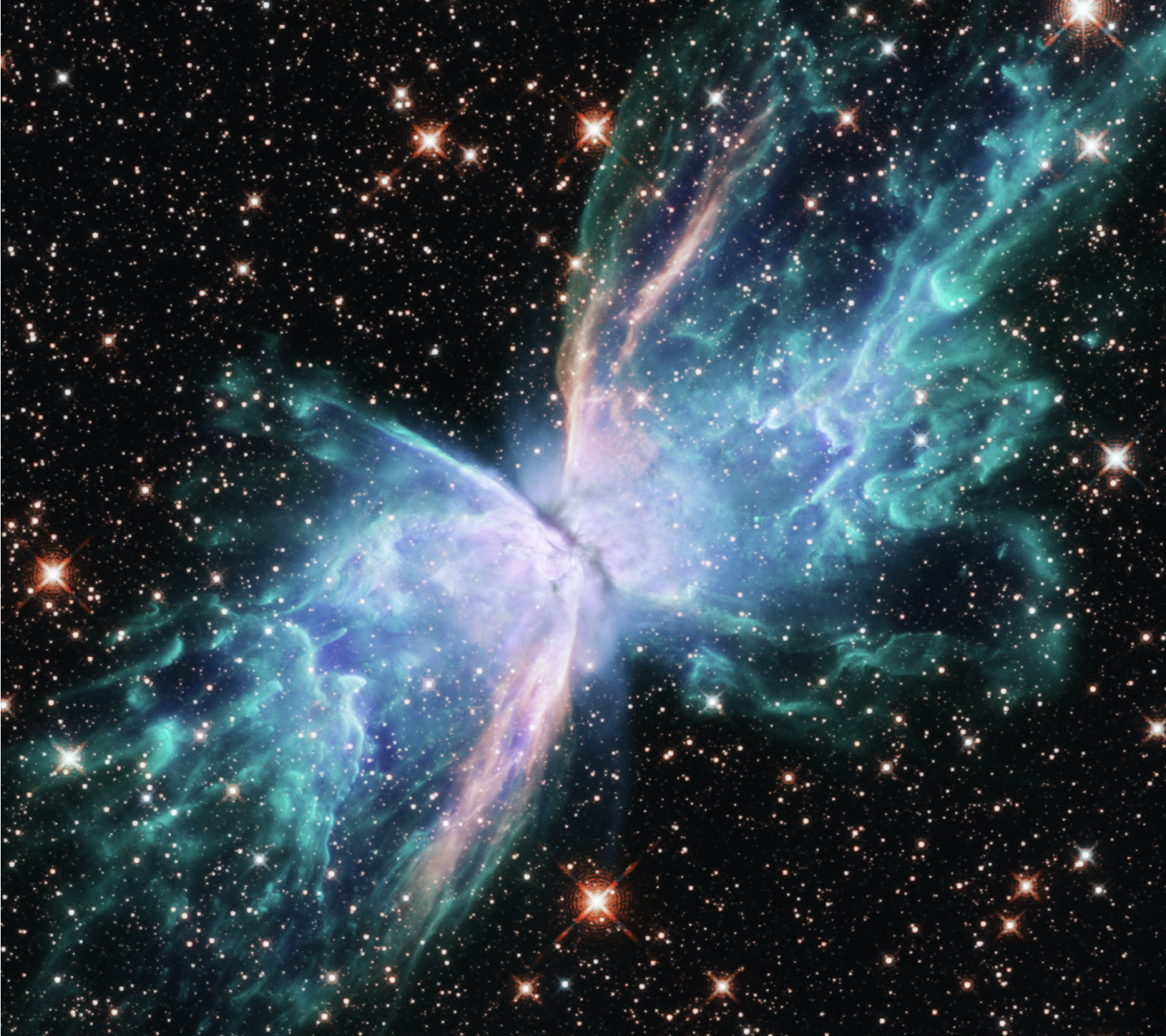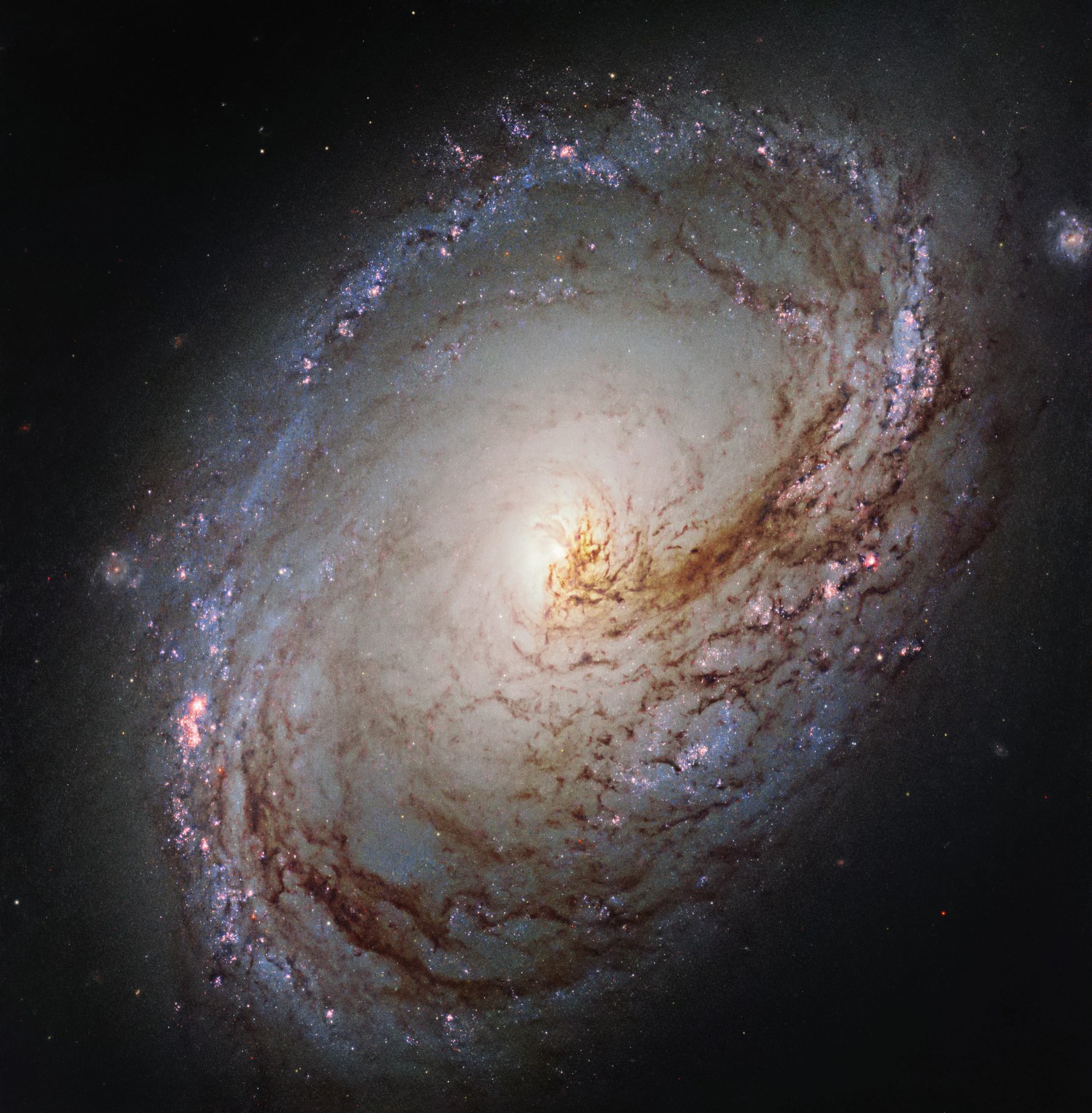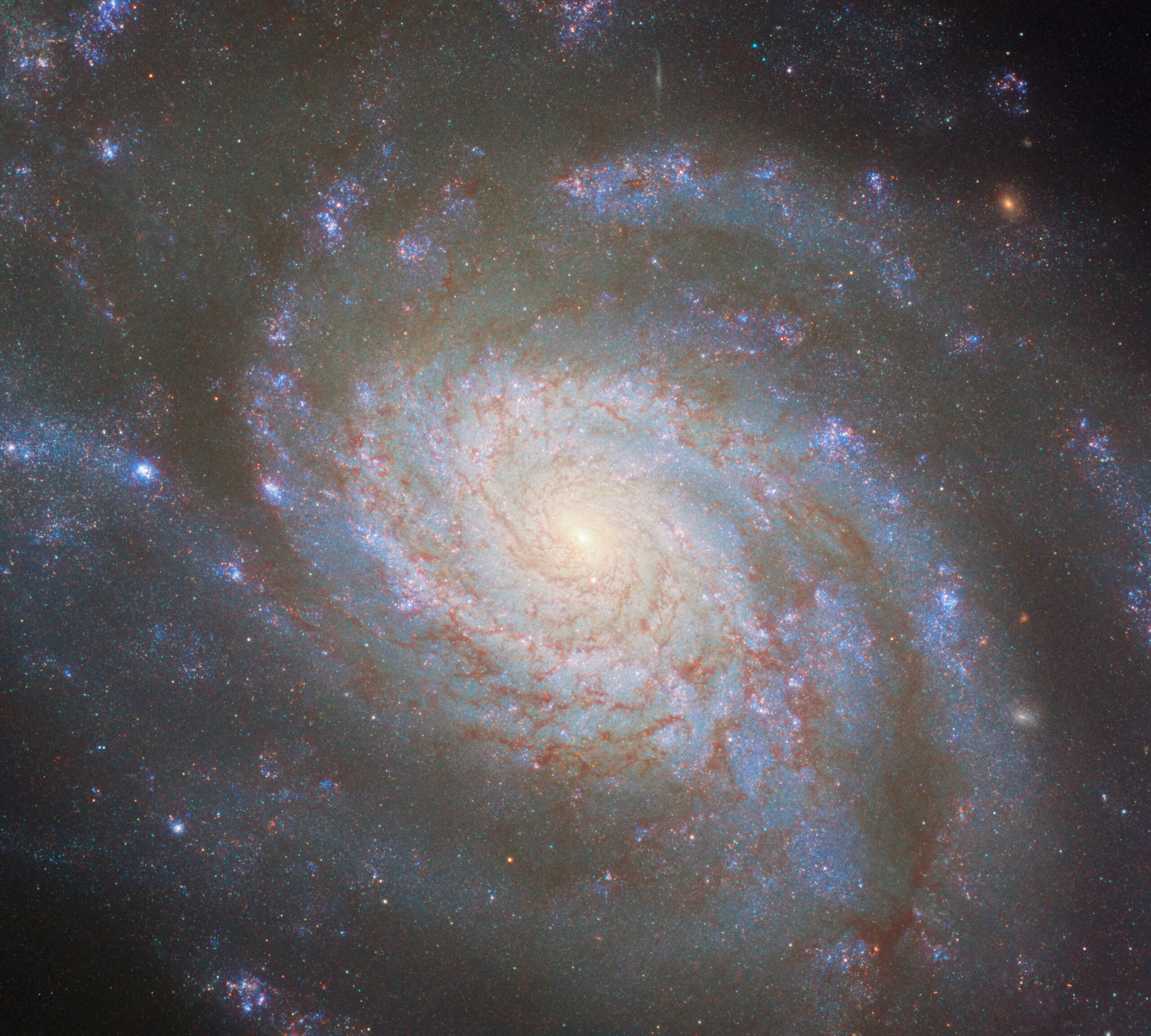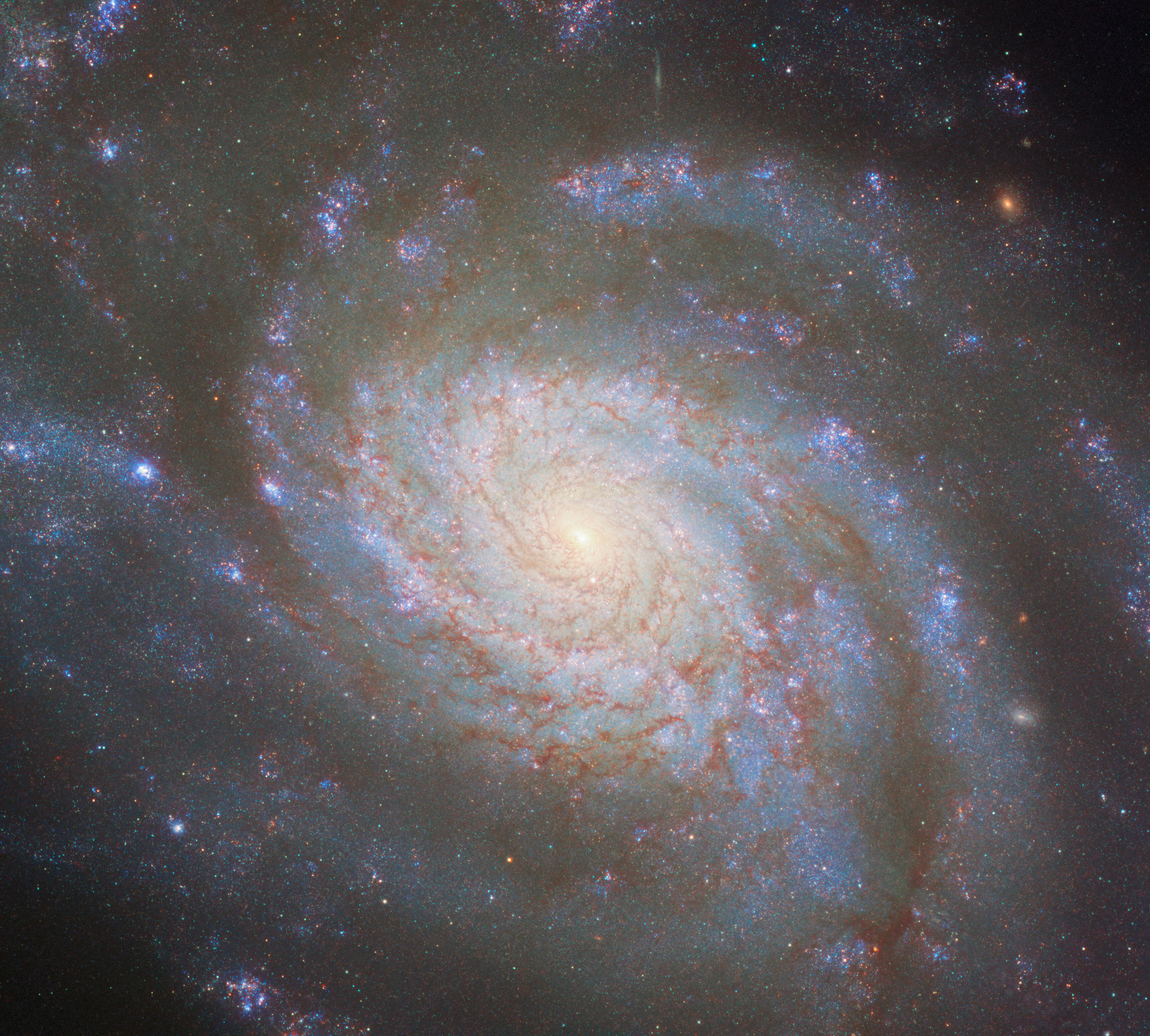3 min read
Hubble Measures the Distance to a Supernova  This NASA/ESA Hubble Space Telescope image features the galaxy NGC 3810. ESA/Hubble & NASA, D. Sand, R. J. Foley Measuring the distance to truly remote objects like galaxies, quasars, and galaxy clusters is a crucial task in astrophysics, particularly when it comes to studying the early universe, but it’s a difficult one to complete. We can only measure the distances to a few nearby objects like the Sun, planets, and some nearby stars directly. Beyond that, astronomers need to use various indirect methods; one of the most important examines Type Ia supernovae, and this is where the NASA/ESA Hubble Space Telescope excels.
This NASA/ESA Hubble Space Telescope image features the galaxy NGC 3810. ESA/Hubble & NASA, D. Sand, R. J. Foley Measuring the distance to truly remote objects like galaxies, quasars, and galaxy clusters is a crucial task in astrophysics, particularly when it comes to studying the early universe, but it’s a difficult one to complete. We can only measure the distances to a few nearby objects like the Sun, planets, and some nearby stars directly. Beyond that, astronomers need to use various indirect methods; one of the most important examines Type Ia supernovae, and this is where the NASA/ESA Hubble Space Telescope excels.
NGC 3810, the galaxy featured in this image, was the host of a Type Ia supernova in 2022. In early 2023, Hubble focused on this and a number of other galaxies to closely examine recent Type Ia supernovae. Type Ia supernovae are the result of a white dwarf exploding, and their peak brightness is very consistent. This attribute allows astronomers to use Type Ia supernovae to measure distances: we know how bright a Type Ia supernova should be, so we can tell how far away it must be by how dim it appears. One snag with this method is intergalactic dust. Because intergalactic dust blocks some of the supernova’s light, astronomers need to determine how much light the dust reduces to accurately measure the supernova’s brightness and calculate its distance. Hubble’s unique capabilities offer them a clever way of doing this.
Astronomers use Hubble to take images of the same Type Ia supernovae in ultraviolet light, which the dust almost completely blocks out, and in infrared light, which passes through dust nearly unaffected. By carefully noting how much light comes through at each wavelength, astronomers can determine how much dust lies between Hubble and the supernova, letting them confidently calibrate the relationship between a supernova’s brightness and its distance. Hubble’s unique capability to observe in ultraviolet and infrared wavelengths of light in great detail with the same instrument makes it the perfect tool for these types of observations. Indeed, some of the data used to make this beautiful image of NGC 3810 focused on its 2022 supernova. You can see it as a point of light just below the galactic nucleus in the annotated image below.
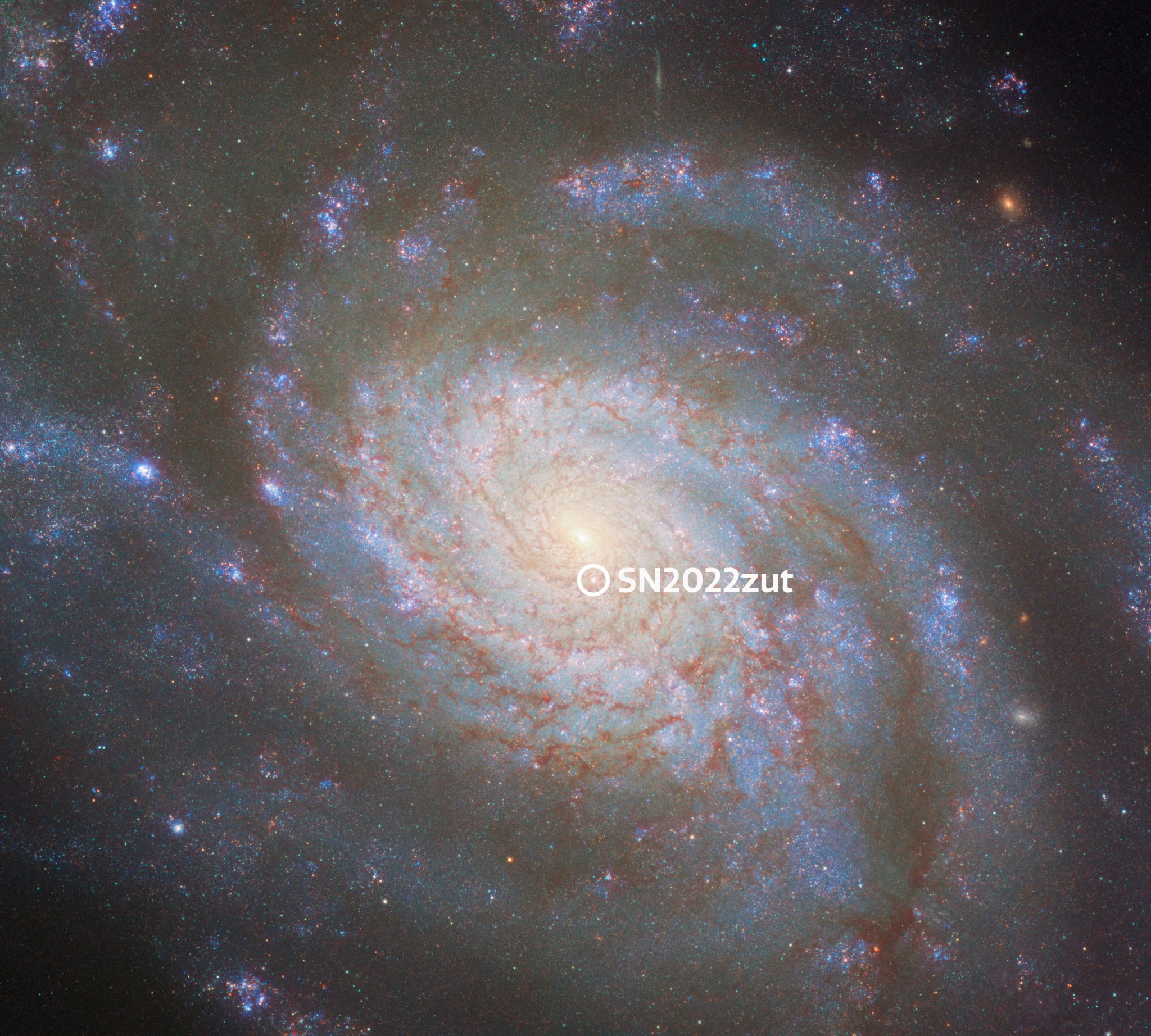 This annotated Hubble image of NGC 3810 denotes the location of the Type Ia supernovae SN 2022zut, It was the eighteen thousand, one hundred and forty-second supernova found in 2022! ESA/Hubble & NASA, D. Sand, R. J. Foley There are many ways to measure cosmic distances, but Type Ia supernovae are one of the most useful and accurate tools because they are so bright. Astronomers must use other methods as well, either as an independent check against other distance measurements, or to measure at much closer or farther distances. One such method, that also works for galaxies, is comparing their rotation speed to their brightness; based on that method, NGC 3810 is about 50 million light-years from Earth.
This annotated Hubble image of NGC 3810 denotes the location of the Type Ia supernovae SN 2022zut, It was the eighteen thousand, one hundred and forty-second supernova found in 2022! ESA/Hubble & NASA, D. Sand, R. J. Foley There are many ways to measure cosmic distances, but Type Ia supernovae are one of the most useful and accurate tools because they are so bright. Astronomers must use other methods as well, either as an independent check against other distance measurements, or to measure at much closer or farther distances. One such method, that also works for galaxies, is comparing their rotation speed to their brightness; based on that method, NGC 3810 is about 50 million light-years from Earth.
Explore More
Hubble Space Telescope
Facebook logo @NASAHubble @NASAHubble Instagram logo @NASAHubble Media Contact:
Claire Andreoli
NASA’s Goddard Space Flight Center, Greenbelt, MD
claire.andreoli@nasa.gov
Details Last Updated Jul 12, 2024 Editor Andrea Gianopoulos Location NASA Goddard Space Flight Center Related Terms Astrophysics Astrophysics Division Galaxies Goddard Space Flight Center Hubble Space Telescope Missions Spiral Galaxies Stars Supernovae The Universe
Keep Exploring Discover More Topics From Hubble Hubble Space Telescope
Since its 1990 launch, the Hubble Space Telescope has changed our fundamental understanding of the universe.

Discovering a Runaway Universe
Our cosmos is growing, and that expansion rate is accelerating.

